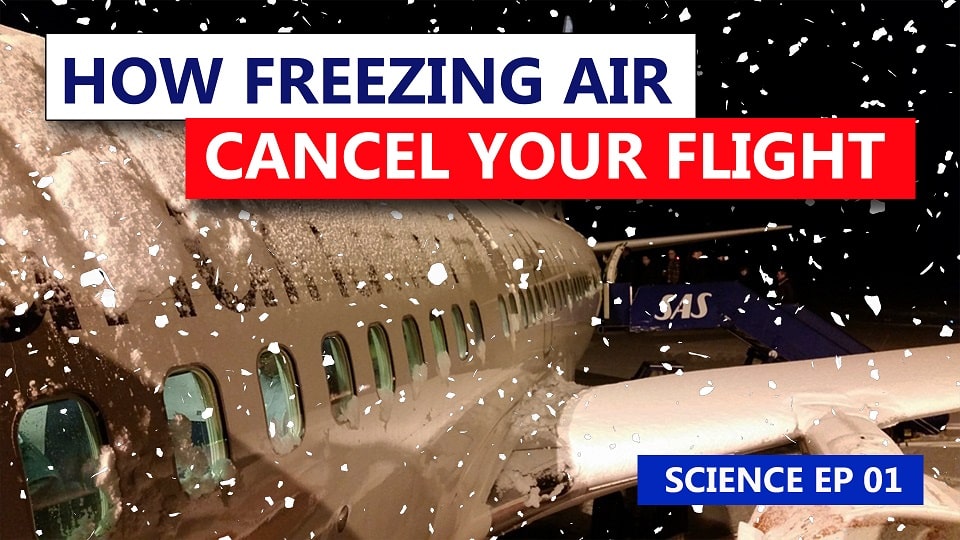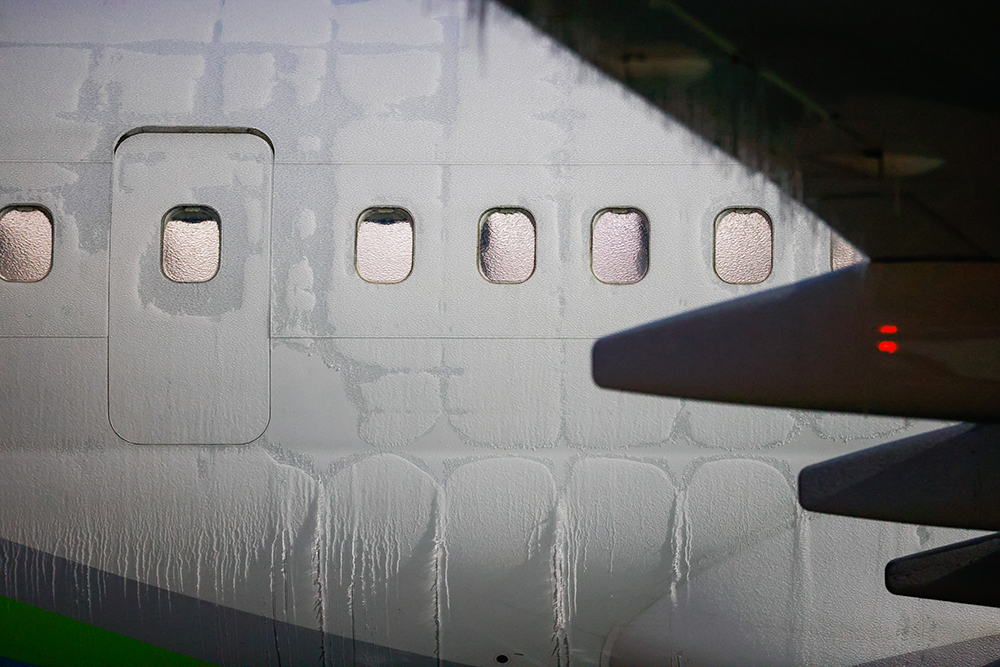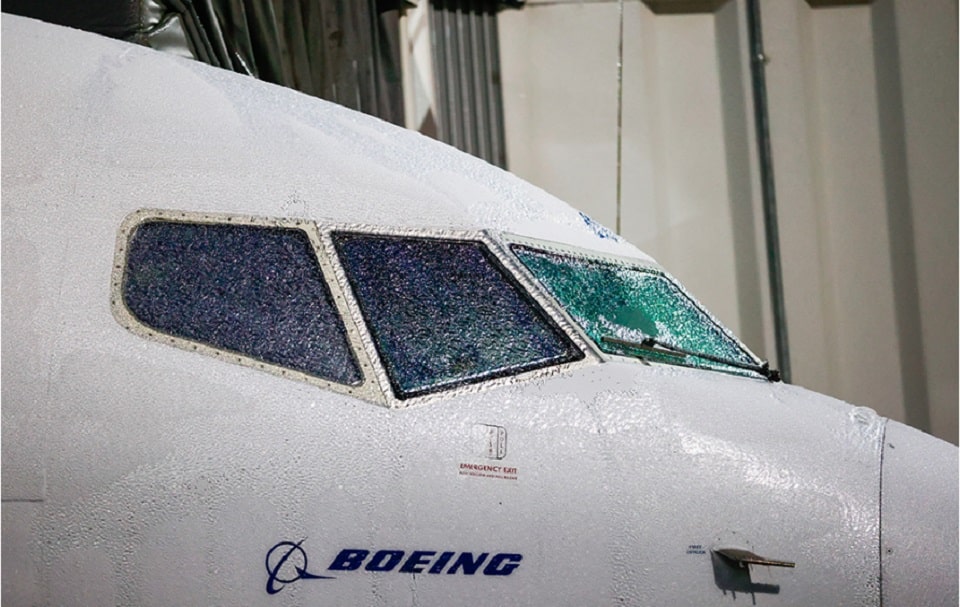Aerospace
What exactly is freezing rain, and why is it so risky for air travel?

Snow is pleasant to many people, but it is terrible for travelers. It is a nightmare for airlines if there is snow at the airport, and the majority of airlines and passengers are affected by the weather. However, it keeps airline passengers safe in the event of a flight cancellation. In this article, we’ll go over this in further detail.
Alaska Airlines pilot Captain Bret Peyton who has worked for airlines for over 22 years has given some of the importance and safety standards for air travel. He goes on to describe how airlines make the difficult decision to cancel flights. But it’s all for a good cause: saving airline passengers.
Airlines often aim for a profit margin throughout the winter and holiday season and get full bookings, but if there is bad weather, they keep profits low and focus on passenger safety.
[adinserter block="2"]
This is How Alaska Airlines is prepping for winter storms(Opens in a new browser tab)
Why do most airlines, including Alaska, cancel flights during the winter?
Explaining Alsaksa pilots, To begin with, safety is our first priority at Alaska Airlines, and we never operate a flight unless we are confident it is fully safe.
Korean Air plane overshoots runway in the Philippines(Opens in a new browser tab)
Freezing rain occurs when warm, humid air rises over surface-level cold air. The temperature inversion causes super-cooled water droplets to adhere to any surface, including an airplane wing, power cables, and even tree branches.
When an airplane’s wing is covered in icicles, it is unable to take off or land. Although deicing only provides a short-term fix for freezing rain, it prevents airplanes from taking off. Moreover, it might result in aerodynamic fluxes.
Although freezing rain is difficult to foresee, some regions, including Seattle and Portland in the United States, continue to experience it.
Alaska is concerned about traveler security. Most aircraft will be grounded if the condition exceeds the limitations.
[adinserter block="3"]
We’ve all seen photos of electrical lines covered with icicles. Imagine if that was an airplane wing. We clearly cannot function under those conditions.
Traditional deicing procedures are effective against freezing rain, but only in light situations. Moderate to heavy freezing rain creates conditions that make any airplane unable to fly in.
Because the prediction is so unpredictable over the next few days, we’re not sure how much freezing rain will fall in Seattle and Portland, but we do expect at least some in these two major cities.
Alaska Airlines pilots are well-versed in operating in winter circumstances, and we will not operate an aircraft unless it is safe to do so. To summarise, if the airplane is moving, it is safe to do so.

Courtesy: Alaska
Air India Pilot Refused To Listen To Younger Female Co-Pilot & The
Weather forecasts aid in airport operations management.
Most airlines cancel flights if the weather forecast indicates that it is unsafe to operate, although in most cases, the airline can operate under continuous monitoring. The ground crew deices the aircraft and prepares it for flight. Furthermore, if the airport is larger, traffic on arrival and departure planes becomes more difficult. Clearing snow on the ground, as well as maintaining ground equipment and aircraft maintenance, is difficult in the winter climate. In terms of operations, airlines need to cancel flights ahead of time so that they can maintain as many planes flying as possible.
[adinserter block="1"]

Courtesy: Captain Bret Peyton (Alaska Airlines)
Why is it dangerous for airplanes to fly in adverse weather?
There are numerous crashes in the aviation industry that are caused by technical reasons and certain external ones, but weather plays a significant role in safe operations. Aviation organizations such as the FAA and EASA are always advised on safe weather operations.
According to the NTSB survey, most crashes occur in low visibility conditions, and it has also been observed that bad weather makes flight operations risky. We believe that the aircraft is flying above clouds and hence is not influenced by them, but it is still not safe as it approaches the land. Due to the snow, electrical equipment may fail to function or sensors may fail to calibrate accurately. It could cause the tubes to become clogged and the equipment to become frozen during operations.
[adinserter block="2"]
The aircraft surface is particularly important because it can accommodate ice on the surface, which can cause problems with aircraft operations. In some airports, tracking the ground and landing planes is difficult. The pilot’s job is to moderate-severe winds and cold temperatures. Some passengers may be able to plan another trip if it is safe to do so. If the flight is risky, it must be grounded.
Why is it necessary to deice an airplane?
As part of our safety policy, they commence deicing measures whenever there is snow or ice on our aircraft. Snow or ice accumulation on the wings or tails of aircraft makes them unsafe to fly, thus they must remove it before takeoff.
They have a full fleet of trucks, equipment, and staff ready to go across several stations, as well as plenty of deicing solutions. They work as swiftly as the airport and weather conditions permit. However, deicing aircraft at the gate can result in lengthier tarmac wait times—but safety comes first.
[adinserter block="1"]
Can a passenger rebook a flight that has already been canceled?
Flight cancellations have few effects on passengers. As many airlines, such as Alaska, resume service on the same routes once the weather returns to normal, passengers are advised to return to the booking website and support center and rebook the tickets.
Because the majority of travelers are affected by the cancellation. Passengers must arrange flights based on the flexibility of the dates. There will be times when you can manage them with the right flight and book it again.
Courtesy: alaskaair.com
Should you wish to hold the value of your ticket(s) and decide to move your trip to a future date, you may place the value of your ticket in your Mileage Plan Wallet for future use or request a full refund by viewing our refund options.
If you enjoyed this article, please share your friends and family about it. keep in touch with Jetline
Marvel

Aerospace
Boeing Transfers Rocket Stage to NASA, Paving Way for Human Moon Mission

Boeing has achieved a significant milestone by providing NASA with the second core stage of the Space Launch System (SLS) rocket.
This crucial component, crafted at NASA’s Michoud Assembly Facility (MAF), is set to propel the Artemis II crew into lunar orbit, marking humanity’s return to deep space after a 50-year hiatus.
The monumental Boeing-built rocket stage, the largest element of the Artemis II mission, will embark on a journey aboard the Pegasus barge, traveling 900 miles to NASA’s Kennedy Space Center.
Comparison of two legendary aircraft B777x vs B747 aircraft:Click here
Upon arrival, it will be meticulously integrated with other essential Artemis II components, including the upper stage, solid rocket boosters, and NASA’s Orion spacecraft within the iconic Vehicle Assembly Building. This intricate integration process is a vital step toward the eagerly anticipated Artemis II launch, slated for 2025.
“Boeing-built products helped land humankind on the moon in 1969, and we’re proud to continue that legacy through the Artemis generation,” remarked Dave Dutcher, vice president and program manager for Boeing’s SLS program. “Together, with NASA and our industry partners and suppliers, we are building the world’s most capable rocket and paving the way to deep space through America’s rocket factory in New Orleans.”
NASA, Lockheed Martin Reveal X-59 Quiet Supersonic Aircraft:Click here
The delivery of Core Stage 2 marks a significant achievement in the evolution of the SLS rocket. Towering over 200 feet and powered by four RS-25 engines, this core stage, coupled with two solid-fueled booster rockets, will generate a staggering 8.8 million pounds of thrust. This immense power is crucial to launching Artemis II and future missions into the vast expanse of space.
The SLS rocket stands unparalleled in its capability to transport both crew and substantial cargo to the moon and beyond in a single launch. Its extraordinary capacity will facilitate the delivery of human-rated spacecraft, habitats, and scientific missions to destinations including the moon and Mars, ushering in a new era of space exploration.
-

 Travel1 week ago
Travel1 week agoAir India to Expand US Operations with Three New Routes After a Decade
-

 Travel2 weeks ago
Travel2 weeks agoWhy We Should Avoid These Stamps in a Passport
-

 Airlines1 month ago
Airlines1 month agoInvestigations Reveal Fake Chinese Titanium in Boeing and Airbus Jets
-

 Tech4 weeks ago
Tech4 weeks agoChina’s CATL Plans 1,800-Mile Electric Plane Launch by 2027
-

 Airport3 days ago
Airport3 days agoTop 10 Largest Airports in the World by Size
-

 Aerospace4 weeks ago
Aerospace4 weeks agoChina’s Fighter Jets Turn Wings into Autonomous Drones
-

 Airlines4 days ago
Airlines4 days agoAir India Rolls Out A350s for Delhi-New York JFK and Newark Routes
-

 Defence3 weeks ago
Defence3 weeks agoBoeing Enhances Chinook with New Engines and Block II Upgrades at $96 Million









